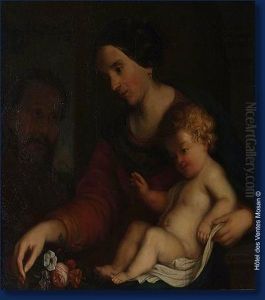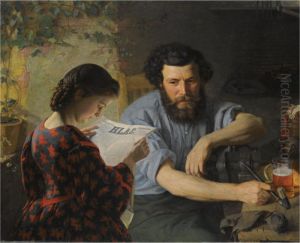Jakub Husnik Paintings
Jakub Husnik was a prominent figure in the realms of education and technology during the late 19th and early 20th centuries, particularly noted for his contributions to the development of reprographic techniques. Born on May 12, 1837, in Louny, which was then part of the Austrian Empire and is now in the Czech Republic, Husnik embarked on a career that would see him blend elements of science, art, and education in innovative ways.
Initially trained as a teacher, Husnik's interests and expertise extended far beyond the conventional classroom. He was deeply engaged in the scientific and technological advancements of his time, especially in the field of printing and graphic reproduction. His most notable invention, the Husnik photolithography process, was a groundbreaking development in the reproduction of documents and images. This process significantly improved the quality, speed, and cost-effectiveness of printing, making it accessible to a broader audience and various industries, including education and publishing.
Throughout his career, Husnik was also an educator, imparting his knowledge and enthusiasm for technology and its applications to his students. His work in developing new printing technologies did not just enhance educational materials in terms of accessibility and quality but also opened up new possibilities in the graphic arts, influencing both art creation and reproduction.
Jakub Husnik's legacy is not only encapsulated in his inventions but also in his contribution to bridging the gap between technology and education. By the time of his death on April 26, 1916, Husnik had established himself as a key figure in the advancement of lithographic techniques and education, with his methods continuing to influence the fields of printing and graphic arts long after his passing. His dedication to innovation and education left an indelible mark on the technological and artistic landscapes, making him a celebrated figure in the history of modern printing and graphic reproduction.

